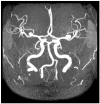Autosomal Dominant Polycystic Kidney Disease: Extrarenal Involvement
- PMID: 38473800
- PMCID: PMC10932244
- DOI: 10.3390/ijms25052554
Autosomal Dominant Polycystic Kidney Disease: Extrarenal Involvement
Abstract
Autosomal dominant polycystic kidney disease (ADPKD) is the most common hereditary kidney disorder, but kidneys are not the only organs involved in this systemic disorder. Individuals with the condition may display additional manifestations beyond the renal system, involving the liver, pancreas, and brain in the context of cystic manifestations, while involving the vascular system, gastrointestinal tract, bones, and cardiac valves in the context of non-cystic manifestations. Despite kidney involvement remaining the main feature of the disease, thanks to longer survival, early diagnosis, and better management of kidney-related problems, a new wave of complications must be faced by clinicians who treated patients with ADPKD. Involvement of the liver represents the most prevalent extrarenal manifestation and has growing importance in the symptom burden and quality of life. Vascular abnormalities are a key factor for patients' life expectancy and there is still debate whether to screen or not to screen all patients. Arterial hypertension is often the earliest onset symptom among ADPKD patients, leading to frequent cardiovascular complications. Although cardiac valvular abnormalities are a frequent complication, they rarely lead to relevant problems in the clinical history of polycystic patients. One of the newest relevant aspects concerns bone disorders that can exert a considerable influence on the clinical course of these patients. This review aims to provide the "state of the art" among the extrarenal manifestation of ADPKD.
Keywords: ADPKD; PLD; bone disorders; ciliopathies; cystic kidney disease; extrarenal cystic involvement; genetic; intracranial aneurysms.
Conflict of interest statement
The authors declare no conflicts of interest.
Figures
References
Publication types
MeSH terms
LinkOut - more resources
Full Text Sources
Medical



